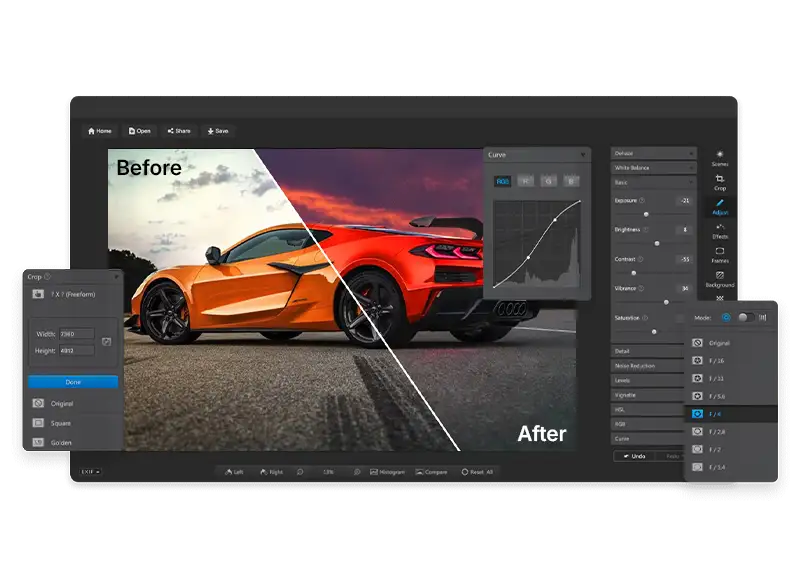2024’s Best Image Editing Software for Professionals and Beginners
Discover the best 2024 image editing tools for pros and beginners alike.

5 MIN READ
Published November 11, 2024

Written By
Allwyn Ruban
Remember that moment when you first tried editing a photo, maybe adding a filter or adjusting the brightness? Fast forward, and now image editing is essential for everyone, from casual users to professionals. Whether you're perfecting a client’s portfolio or tweaking your latest vacation snap, the right software makes all the difference.
In 2024, image editing software is more powerful and accessible than ever. From pro-level tools to beginner-friendly options, this guide will help you find the perfect fit for your editing needs.
What to Look for in Image Editing Software
Not all image editing software is created equal, and finding the right one can feel like searching for the perfect camera angle — tricky, but worth it when you nail it. So, what should you look for? It depends on whether you're a seasoned pro or just dipping your toes into the editing world.
-
For the Pros:
If you’re a professional, you already know that the details matter. Think precision tools like layering, masking, and RAW file support. You want software that offers high-end editing features without slowing you down. Look for seamless integration with other creative tools so your workflow stays smooth, even when you’re juggling multiple projects.
-
For Beginners:
Just getting started? Don’t worry, you don’t need a degree in graphic design to get great results. The best software for beginners keeps it simple with easy drag-and-drop tools, one-click filters, and built-in tutorials that make you feel like a pro in no time. Bonus points if it’s fun and not overwhelming!
At the end of the day, the best image editing software is the one that helps you work smarter, not harder and keeps you coming back for more.
2024’s Best Image Editing Software for Professionals
If you’re a professional, you need software that works as hard as you do. The right tools can turn a good edit into a masterpiece. In 2024, these are the top picks for professionals who need precision, power, and performance:
-
1. Adobe Photoshop – The Industry Standard
When it comes to advanced editing, Adobe Photoshop remains the top choice for professionals. With its extensive features like layering, masking, and RAW file support, Photoshop allows you to create complex edits with precision. Plus, it integrates smoothly with other Adobe products, making it ideal for those with a creative workflow across platforms.
-
2. Affinity Photo – Pro-Level Editing Without the Subscription
Affinity Photo is perfect for those who want professional tools without the ongoing subscription fees. It offers powerful features comparable to Photoshop, including advanced retouching, multi-layer editing, and 360-degree image editing, all in a one-time purchase.
-
3. Capture One – The Photographer’s Dream
Capture One is known for its exceptional RAW file processing and color grading capabilities. If you’re a photographer who cares about the fine details in your images, Capture One offers the precision you need to bring your photos to life.
Each of these tools is built for professionals who demand the best. Whether you’re deep into photo retouching or creating complex compositions, these options have you covered.
2024’s Best Image Editing Software for Beginners
If you’re just getting started with image editing, you don’t need to dive into the deep end with complex tools. The best software for beginners makes editing fun, simple, and quick, without sacrificing quality. Here are the top picks for 2024:
-
1. Canva – Effortless Design, Even for Beginners
Canva is a favorite for beginners because of its drag-and-drop simplicity. Whether you’re creating social media posts or touching up photos, Canva offers an intuitive interface with pre-made templates and one-click filters. You can jump in, make quick edits, and share your creation in minutes—no experience required!
-
2. Adobe Photoshop Elements – A Gentle Introduction to Photoshop
If you want to dip your toes into Adobe’s world without the complexity of Photoshop, Photoshop Elements is a fantastic choice. It provides simplified versions of powerful tools, like guided edits, automatic enhancements, and creative effects that make photo editing fun and manageable for beginners.
-
3. Fotor – All-in-One Simplicity
Fotor is an easy-to-use, all-in-one photo editor for beginners who want quick results. With a user-friendly interface and one-click filters, Fotor is ideal for anyone who wants to enhance photos with minimal effort. Plus, it includes cloud-based storage for editing on the go.
These tools are designed to take the frustration out of editing, helping you achieve impressive results without needing advanced skills.
Boost your eCommerce success with expert image editing services. Let’s work together to achieve remarkable results!
Free vs Paid: Which Option is Right for You?

When it comes to image editing software, one of the biggest decisions you’ll face is whether to go with a free option or invest in a paid one. While both have their perks, choosing the right path depends on what you need from your editing tool.
Free Software
Free tools are great for beginners or casual users who need basic features like cropping, filters, and minor adjustments. Apps like Canva and Fotor offer plenty of editing options without costing a dime. They’re perfect if you’re editing on the go or don’t need pro-level tools. However, free options often come with limitations, such as watermarks, fewer features, or lower-quality outputs.
Paid Software
If you’re serious about image editing or need advanced features, it’s worth investing in paid software. Programs like Adobe Photoshop and Affinity Photo offer professional-grade tools, allowing for more complex edits, RAW file support, and seamless workflow integration. Paid options also typically offer better customer support, regular updates, and a wider range of creative tools.
Which is right for you?
If you’re just starting out or need something quick and easy, free software might be all you need. But if you’re a professional or want to take your editing to the next level, paid software offers the depth and features you won’t find in free versions.
The Final Word
In the end, it’s all about finding what works best for you. Free software can get you started, but if you’re aiming for professional results, paid tools are the way to go. Whatever you choose, remember the best software is the one that makes your editing easier and more fun.
About the writer :
Allwyn Ruban heads business development and marketing at Zealous Services. He’s the go-to person for finding smart ways to grow their 3D services, ...He from animation to modeling. With a knack for digital strategy, Allwyn is all about helping clients achieve their goals while expanding Zealous' reach in the industry. His friendly approach makes collaboration easy and effective.
Read More